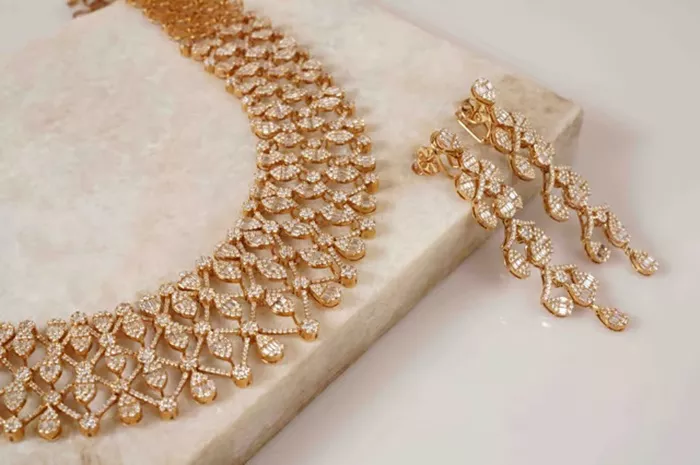As global awareness of climate change grows, the jewelry industry is undergoing a green transformation. Consumer interest in environmentally responsible products increased sharply during the COVID-19 pandemic, with more shoppers seeking brands that reflect their values. A report by the Boston Consulting Group revealed that 70% of surveyed consumers became more aware of how human activity threatens both people and the planet. Additionally, 87% of respondents believe companies should prioritize environmental concerns more than they have in the past.
Pandora, the world’s largest jewelry brand, is already ahead of this shift. The Denmark-based company has been setting new standards for sustainability within the industry. Known for its customizable charms and affordable luxury, Pandora operates in over 100 countries and sells its products through more than 7,400 outlets, including 2,700 concept stores.
Building a Greener Business
Pandora has integrated sustainability into the core of its business. Its crafting facilities in Thailand now run on 100% renewable energy. These facilities are modern, energy-efficient, and a model for others in the industry. However, Pandora reports that more than 90% of its greenhouse gas emissions come from its supply chain — mainly from raw material procurement, packaging, and transportation.
To reduce its environmental impact, Pandora has pledged to stop using mined silver and gold by 2025. Instead, it will rely entirely on recycled precious metals. This move will significantly lower the company’s carbon emissions and reduce water usage. According to Pandora, recycled silver produces just one-third of the carbon emissions of mined silver, while recycled gold emits about 600 times less carbon than newly mined gold.
Pandora’s CEO, Alexander Lacik, emphasized the lasting value of recycled metals. “Silver and gold are beautiful jewelry materials that can be recycled forever without losing their quality,” he said. “Metals mined centuries ago are just as good as new. We want to prevent these fine metals from ending up in landfills and help build a circular economy.”
In 2020, Pandora began using only renewable electricity at its Thai production sites. By 2025, it aims to be carbon neutral across all operations. Currently, 60% of the silver and gold used in its jewelry is from recycled sources.
Industry-Wide Change
Silver is Pandora’s most used material, making up more than half its product materials by weight. The company also uses smaller amounts of gold, palladium, copper, and lab-made stones like nano-crystals and cubic zirconia. Pandora confirmed that its shift to recycled materials applies to all silver and gold in its products — including grains, chains, and parts supplied by external vendors.
To further support its climate goals, Pandora has joined the Science Based Targets initiative (SBTi), which includes partners like the UN Global Compact and World Wildlife Fund. This group helps businesses align their emission targets with the Paris Agreement goals.
Marissa Saretsky, Pandora’s Director of Corporate Sustainability, said the company is committed to setting science-based targets this year. These targets are meant to ensure global warming stays below 2°C from pre-industrial levels. “The Science Based Targets initiative is the leading corporate platform for climate action,” Saretsky noted. “We are fully committed to reducing emissions across our entire value chain.”
Responding to Stakeholder Demands
The push for sustainability is no longer just a trend. It is now a serious factor in business success. Saretsky said employees are proud to work for a company that values sustainability. Investors also look closely at Environmental, Social, and Governance (ESG) performance. And consumers are showing strong preferences for brands with clear ethical standards.
Only about 15% of the world’s silver supply comes from recycled sources. Of that, over half is reclaimed from industries like electronics and chemical manufacturing. Pandora plans to work closely with suppliers to ensure a reliable supply of certified recycled silver, verified by organizations such as the Responsible Jewelry Council.
Pandora will also engage with key players in the supply chain to boost the availability of recycled silver and raise production standards. Saretsky stressed that these efforts reflect Pandora’s core principles. “At the heart of Pandora’s business is the belief that high ethical standards and high-quality jewelry go hand in hand,” she said.
Controlling Its Impact
Pandora has a unique advantage: it owns and controls most parts of its value chain, from design and sourcing to production and sales. This gives the company greater influence over its sustainability practices and allows it to implement high standards across all areas.
“We consider sustainability in everything we do — from how we craft our jewelry to the work environment we provide,” Saretsky said. “Reducing our impact on the planet and treating all stakeholders fairly is essential to our continued success.”
As consumer expectations evolve and the climate crisis intensifies, Pandora’s sustainability journey stands as a blueprint for the broader jewelry industry. Its actions not only reduce harm to the environment but also set a new standard for responsible luxury.
Related topics:
- What is Pink Sapphire? Its History, Meaning and Qualities
- DCA Unveils New Learning Platform and Revamps Jewelry Sales Courses
- What Is a Raw Natural Blue Sapphire?


